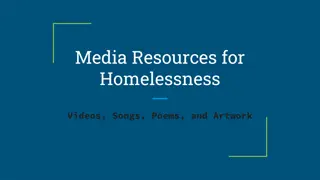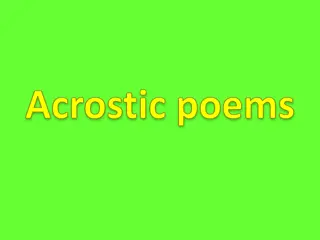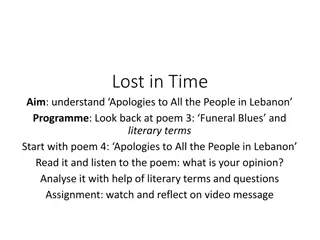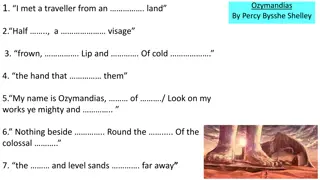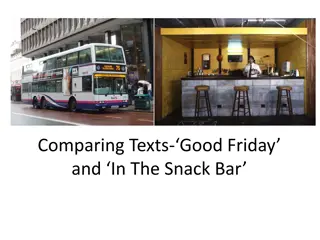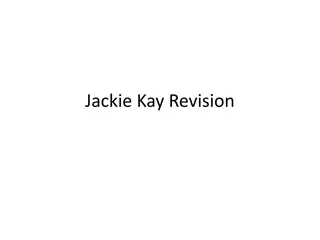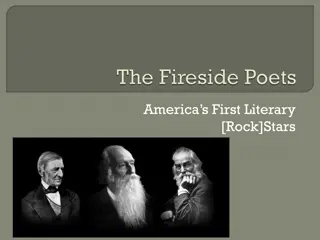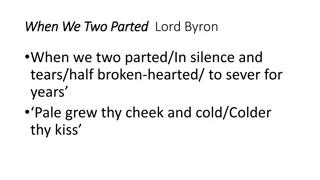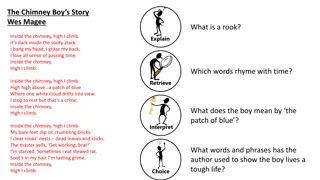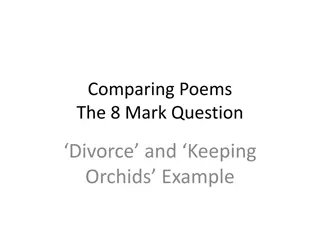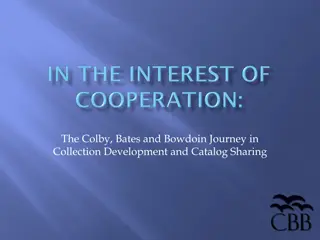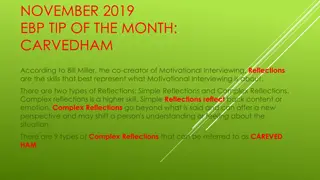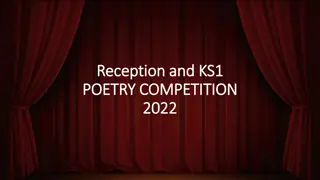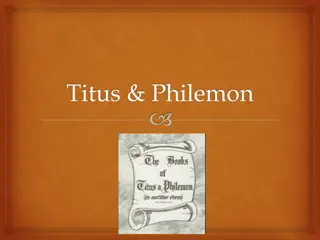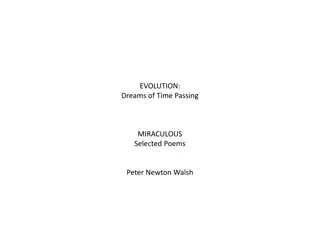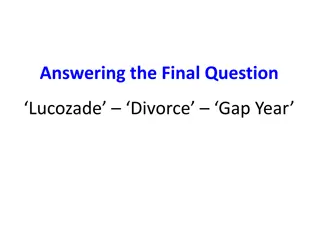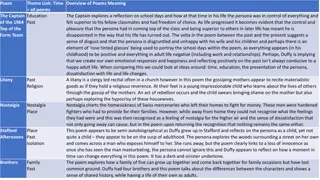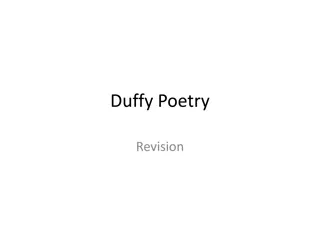Reflections on Life and Nature: A Study of Longfellow's Poems
Exploring themes of life, nature, and mortality in Henry Wadsworth Longfellow's works "The Tide Rises, The Tide Falls" and "A Psalm of Life." The poems delve into the inevitability of death, the enduring power of nature, and the meaningfulness of life's purpose. Through vivid imagery and poetic devices, Longfellow prompts readers to contemplate the transient yet impactful nature of existence.
Download Presentation

Please find below an Image/Link to download the presentation.
The content on the website is provided AS IS for your information and personal use only. It may not be sold, licensed, or shared on other websites without obtaining consent from the author.If you encounter any issues during the download, it is possible that the publisher has removed the file from their server.
You are allowed to download the files provided on this website for personal or commercial use, subject to the condition that they are used lawfully. All files are the property of their respective owners.
The content on the website is provided AS IS for your information and personal use only. It may not be sold, licensed, or shared on other websites without obtaining consent from the author.
E N D
Presentation Transcript
The Tide Rises, The Tide Falls and A Psalm of Life By Henry Wadsworth Longfellow
STANZA 1 What is the Rhyme Scheme? The tide rises, the tide falls. The twilight darkens, the curlew calls; Along the sea sands damp and brown The traveler hastens toward the town, And the tide rises, the tide falls. THEMES: (1)Man pitting himself against nature MAN LOSES (2) Tide Rises and the Tide Falls; Nature will overcome everything (3) Tide will keep rising and falling and the traveler will be forgotten. To traveler, reason for the journey is: Vitally important Worth the risk of racing the tide to reach the other side. He loses the race and the tide reaches the traveler before he is able to attain the important goal.
destined: We were made with a purpose. We have been destined to live meaningfully. Darkness settles on the roofs and walls, But the sea, the sea in darkness calls; The little waves, with their soft, white hands Efface the footprints in the sands, And the tide rises, the tide falls. *Creates a somber atmosphere *Personification of a child s hand Expressing the gentle, soothing Affect of nature. White is also the color of sea foam Life is not about emotions ( enjoyment or sorrow ; rather, it is about action what we do with our lives is what really counts.
Alliteration: repetition of s hostler = person who takes care of horses The morning breaks; the steeds in their stalls Stamp and neigh, as the hostler calls; The day returns, but nevermore Returns the traveler to the shore. And the tide rises, the tide falls. Symbolizes death and that life will go on even when you are not there; the tide will continue to rise and fall as people will come and go. Nature is lasting; humans are not.
SOAPSTone Who is the speaker? What is the occasion? Who is the audience? What is the purpose? What is the subject? What is the tone?
SOAPSTone Who is the speaker? Middle-Aged to Older Man (probably the poet) What is the occasion? An observation of the inevitability of death. Who is the audience? Himself or human beings What is the purpose? Accept the inevitability of death and come to terms with it. What is the subject? The cycle of life & nature What is the tone? accepting, calm, matter of fact
The Title of the Poem A Psalm of Life The word psalm in the title makes you think that the poem will be religious in nature. There is a book in the Bible called Psalms, many of which focus on the brevity of life. (e.g., Psalm 39:5, Psalm 90:12) Back to Title Slide
Rhyme scheme Tell me not in mournful numbers, Life is but an empty dream! For the soul is dead that slumbers, And things are not what they seem. A B A B Empty dream: metaphor referring to the how life in not barren, vacant and futile. Slumber: state of unconsciousness. You don t know what is going on around you. NEXT STANZA
NEXT STANZA Previous Slide Longfellow uses a sleep metaphor in the first stanza. He starts out by saying that life is not an empty dream. This metaphor expresses that our lives have purpose. The idea of life being a dream suggests that it is only an illusion or that it will amount to nothing. The word empty emphasizes the idea of futility. He continues that metaphor in line 3 with the soul is dead that slumbers. If we are not realizing our life s purpose, i.e., slumbering, then we are not having the impact on the world that we are meant to have.
Reminds me of the common lines of funeral services: ashes to ashes; dust to dust. Exclamation points show his earnestness. Life is real! Life is earnest! And the grave is not its goal; Dust thou are, to dust thou returnest, Was not spoken of the soul. The rhyme in lines 2 and 4 of this stanza, emphasizes goal and soul. This contributes to the serious and religious tone of the poem. We must set goals in your lives, and these goals must be life-affirming and enriching. The word soul appears again, reiterating the spiritual nature of man. Only the physical body will return to dust. The soul is everlasting. The soul is our true being, while the body is only the vessel that holds our soul.
Not enjoyment, and not sorrow, Is our destined end or way; But to act, that each tomorrow Finds us farther than today. destined : We were made with a purpose. We have been destined to live meaningfully. Life is not about emotions ( enjoyment or sorrow ; rather, it is about action what we do with our lives is what really counts.
Lasts a long time (after we re long gone) We don t have long on this earth. Stout = strong Art is long, and Time is fleeting, And our hearts, though stout and brave, Still, like muffled drums, are beating Funeral marches to the grave. Mary Storer Potter Longfellow Longfellow wrote this poem after his first wife s death after a miscarriage. He was extremely depressed after her death. Later, he pursued and was rejected by Fanny Appleton, which also lead to some depression. Simile: like muffled drums The sound of drums suggest the beating of a heart, but the drums are beating funeral marches, i.e., we will all die.
Bivouac: a temporary encampment of troops; this metaphor again suggests the brevity of life In the world's broad field of battle, In the bivouac of Life, Be not like dumb, driven cattle! Be a hero in the strife! These alliterations imitate the sounds of bombs dropping, appropriate for the battlefield metaphor. Lots of alliteration in this stanza: Broad Battle Bivouac Be be dumb driven Next Stanza
Metaphor The battle metaphor suggests the struggles and conflicts of the world. Longfellow experienced some personal struggles right around the time of his writing this poem. Examples of conflicts during this time in America are slavery, economic struggles related to industrialism, and the fight for women s rights. Previous Slide
Metaphor The cattle metaphor states that we are not just dumb animals. We have minds and souls. We should NOT just go wherever outside forces drive us; rather, we should live with purpose. Previous Slide
Makes me think of the saying, Dont count your chickens before they hatch. We sometimes think that everything s going to turn out okay in the end, but the speaker is saying not to place our trust in what might happen. We must seize the day: Act in the present! This reminds me of Ben Franklin s aphorism: One today is worth two tomorrows. Trust no Future, howe'er pleasant! Let the dead Past bury its dead! Act,--act in the living Present! Heart within, and God o'erhead! I noticed the contrast of the living Present and the dead Past. Connects again with the religious tone of the poem; it s a Psalm of life. We are accountable to God for what we do with our lives. He s watching us. Romantic Ideals: Intuition and Individualism Personification of the Past: the past should bury its dead, meaning we should not let the past hinder us in the present. We need to leave the past behind us: the mistakes and pain.
Lives of great men all remind us We can make our lives sublime, And, departing, leave behind us Footprints on the sands of time; When I think of the footprints in the sand, I also think about how they are easily Heavenly washed away. Is our mark on the world that superficial? The use of the same word for the rhyme in lines 1 & 3 in this stanza suggests the universal meaning of the poem the lesson is for all of US, not just the speaker of the poem. Who are some of these great men ? Who are our inspirations in life and what makes them great? Next Stanza
Footprints, that perhaps another, Sailing o'er life's solemn main, A forlorn and shipwrecked brother, Seeing, shall take heart again. Here, Longfellow uses the extended metaphor of the ship on the ocean: The person s journey is characterized as sailing, and his journey is on the main, or the open ocean. Also, the person is shipwrecked, indicating that are facing a great struggle, which threatens to destroy him. The lives we live can be an inspiration to others.
The poem advocates action, regardless of what the result may be. Let us, then, be up and doing, With a heart for any fate; Still achieving, still pursuing Learn to labor and to wait. Longfellow says to be up and doing, but he never says what we are to be doing. In Puritan days, the reward for hard work was evident: success and wealth. However, by Longfellow s day, industrialization made work much more repetitive and less rewarding. No reward is promised in Longfellow s poem. We are to labor and wait. Just keep working, he seems to say, for the sake of working.
If time be of all things the most precious, wasting time must be, as Poor Richard says, the greatest prodigality, since, as he elsewhere tells us, lost time is never found again, and what we call time-enough, always proves little enough: let us then be up and be doing, and doing to the purpose; so by diligence shall we do more with less perplexity. Sloth makes all things difficult, but industry all easy. Previous Slide
Works Cited Peck, David R. "'Let us, then, be up and doing'. (Essays)." ANQ 16.3 (2003): 30+. General OneFile. Web. 8 Mar. 2012.


